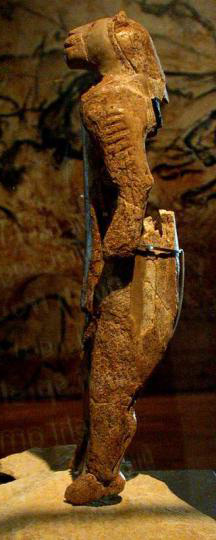

Anthropomorphism is suggesting that non-human things have human traits, emotions, and intentions.[1] It is common for people to do this and considered to be an innate tendency of psychology.[2]
Anthropomorphism is often used in stories and art. It can mean making the thing shaped like a human. The story of the "Three Little Pigs" has a wolf and pigs who talk and act like humans. Mickey Mouse also talks and acts like a human. These are examples of a type of anthropomorphism called "furry".
The novel The Call of the Wild also uses anthropomorphism. The main character is a dog named Buck. Many other characters are dogs and wolves. In the story, the animals think and act more like humans than real dogs do.
Reasons for anthropomorphism
People can explain why they do things. People are not as good at knowing why non-human things do things. This can lead to people assuming non-human things will act or think like humans.
Knowledge about humans is got early in life. It is more detailed than knowledge about non-human entities, and is better remembered.[3]
Related pages
- Furry: Anthropomorphism where animals are shown as human-like in stories and art.
References
- ↑ Oxford English Dictionary. "Anthropomorphism, n." Oxford University Press, 1885.
- ↑ Hutson, Matthew (2012). The 7 Laws of Magical Thinking: how irrational beliefs keep us happy, healthy, and sane. New York: Hudson Street Press. pp. 165–81. ISBN 978-1-101-55832-4.
- ↑ Epley, Nicholas; Waytz, Adam; Cacioppo, John T. (2007). "On seeing human: A three-factor theory of anthropomorphism". Psychological Review. 114 (4): 864–886. CiteSeerX 10.1.1.457.4031. doi:10.1037/0033-295x.114.4.864. PMID 17907867.